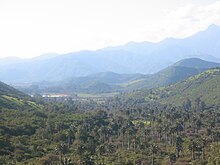Central Chile
The numerous rivers greatly increase their flow as a result of the winter rains and the spring melting of the Andean snows, and they contract considerably in the summer.Exports of fresh fruit began to rise dramatically in the mid-1970s because Chilean growers had the advantage of being able to reach markets in the Northern Hemisphere during that part of the world's winter.The pre-Andean highlands and some of the taller and more massive mountains in the coastal range (principally the Cordillera de Nahuelbuta) still contain large tracts of old-growth forests of remarkable beauty, some of which have been set aside as national parks.Its economy is characterized by its diversity and the strongest pillars lie in the use of natural resources, through the copper mining, logging, agriculture and wine producing, fishing, and manufacturing sector.The main cities are: Santiago, Valparaíso, Viña del Mar, Quilpué, Villa Alemana, Quillota, Puente Alto, San Antonio, Melipilla, Rancagua, Curicó, Talca, Linares, Chillán, Concepción, Talcahuano, Coronel and Los Ángeles.









Chilean Central ValleyNorte GrandeNorte ChicoZona SurZona AustralNevado de Longavínatural regionscontinental ChileChileanSantiagoValparaísoConcepcióncoastal rangesemi-desertEl Norte ChicolatitudeValdivian temperate rain forestsecoregionLos Lagos RegionSouth AmericafertileregionagriculturalChilean Wine PalmsLa Campana National ParkrainfalltopographyChilean winesold-growth forestsrural economyChile's vineyardsValparaíso RegionSantiago Metropolitan RegionO'Higgins RegionMaule RegionÑuble RegionBío-Bío Regioneconomicproductivitycopper miningloggingagriculturewine producingfishingmanufacturingViña del MarQuilpuéVilla AlemanaQuillotaPuente AltoSan AntonioMelipillaRancaguaCuricóLinaresChillánTalcahuanoCoronelLos ÁngelesInternational Journal of ClimatologyNatural regions of ChileChilean Antarctic TerritoryDesventuradas IslandsEaster IslandJuan Fernández IslandsSala y Gómez